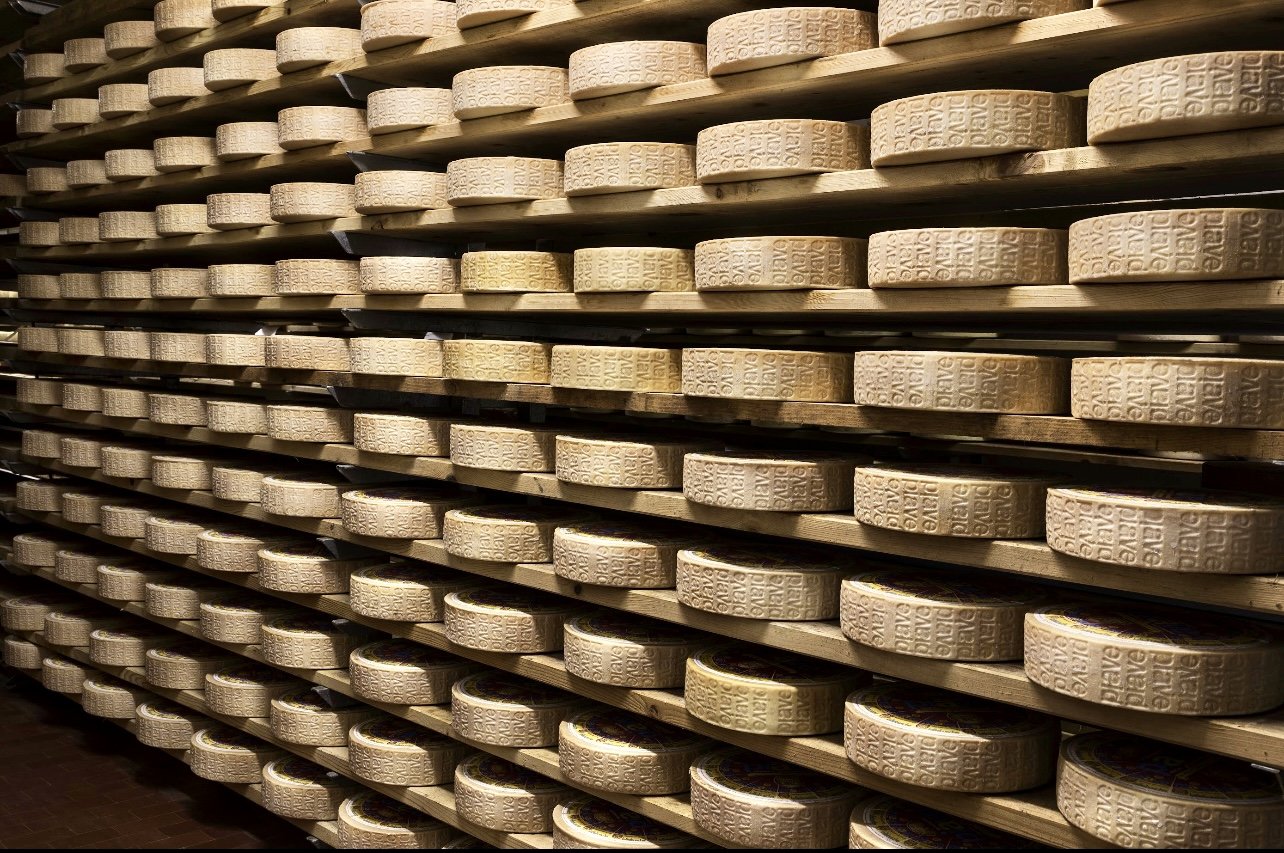Lemon and Piave DOP Cheese Risotto Paired With Lake Garda Wines
/When talking about Italian food, wine is always a part of the equation. Risotto is a staple of northern Italian cuisine and this classic, creamy, lemon and cheese risotto couldn’t taste better than with a glass of locally-made wine alongside it.
Recently I attended a fun and educational online cooking class through Mamablip, a Florence-based online and in-person space for learning about Italian food and wine. Before the class, I received a box of goodies from the north of Italy: two blocks of Piave DOP, a specialty cheese made in the Veneto region, and two wines: sparkling Garda DOC and Valtènesi rosé. I had visited Lake Garda twice in 2019 and these authentic northern Italian ingredients brought me back to a stunningly beautiful area which I wrote about in Lake Garda, A Wine and Food Lover’s Delight.
Scroll down after the recipe to find more information about this terrific cheese and these crisp and tasty wines, all made in the fresh, alpine air near Lake Garda.
Lemon Risotto
6 servings (as an appetizer)
3 tablespoons olive oil
3 tablespoons butter (split)
2 shallots, diced
1/4 teaspoon salt
1 & 1/2 cups carnaroli rice (considered the king of Italian rice!)
1/2 cup dry white wine
1 quart chicken stock
2 cups water
salt to taste
1/2 cup grated Piave Vecchio DOP cheese, finely grated
Zest and juice from one lemon
3 tablespoons chopped parsley
Freshly ground white pepper to taste
1) Place a sauté pan over medium heat and add olive oil and half the butter. Once the butter is foamy, add the shallots and salt and cook until shallots are translucent being careful not to brown them. Add the rice and sauté for about 4-5 minutes.
2) Deglaze the pan with wine and stir until all of the wine is absorbed. Add the warm stock and the water, 4 ounces at a time, stirring constantly until the rice is 95% cooked, about 20 minutes or so. It should be almost "al dente" with a slight resistance in the center when chewed. As you stir rice, add salt to taste.
3) Stir in cheese, lemon zest, lemon juice, parsley, pepper and remaining butter until melted and serve.
What is Piave DOP cheese?
Named after the river Piave, this DOP (more on DOP below) cheese is produced exclusively in the Dolomites area of Belluno in Italy’s Veneto region. Piave cheese is produced primarily with milk from indigenous Italian cattle breeds, and can be enjoyed in five different age designations, ranging from 20 days for the delicate, mild Piave Fresco to over 18 months for the deep, nutty Piave Vecchio Riserva cheese.
Piave DOP cheese is perfect when served in small flakes for an aperitif or when served on top of pasta, a risotto dish, or over salads.
What does DOP mean?
The Denominazione di Origine Protetta (Protected Designation of Origin), better known by the acronym DOP, is a quality mark that protects European agri-food excellence. In order for a cheese to be acknowledged as DOP, the production and ripening phases must take place in a defined geographical area, with the packaging, labeling and marketing also regulated by DOP standards.
How to ensure you’re buying Piave DOP cheese
Each Piave DOP cheese has a label indicating the name of the product, the type, and the name of the producer. On the other side, a stamp identifies the day, month, and year of production. The name “PIAVE” is branded vertically across the rind of the cheese, alternating the direction of the writing.
Learn the fascinating story about Piave DOP cheese at formaggio piave.it.
Sparkling Garda DOC Wine
As with Piave cheese, DOC is used as a guarantee of a wine’s quality and origin and it means “designation of controlled origin.”
The Garda DOC wine appellation was created in 1996. Its production of red, white, rosé and sparkling wines spans ten different appellations in the hills around Lake Garda, in the region of Lombardy to the west and Veneto to the east. Five of the better-known areas are Bardolino, Lugana, Soave, Valtènesi, and Valpolicella.
As of 2017, sparkling wines designated as Garda DOC can be made within these ten Garda appellations and are simply labeled Garda DOC. These fruity—yet most are dry—spumante (sparkling) wines are a great alternative to Prosecco.
Production of Sparkling Garda DOC
White Garda DOC sparkling wine must be based on Garganega, Pinot Grigio, and/or Trebbiano, and Chardonnay, while rosé Garda DOC sparkling wine may be based on Corvina, Rondinella, Pinot Nero and Merlot. They may either be bottle-fermented (traditional method) or tank-fermented (Charmat), and they may range in sweetness from Brut Nature to Demi-Sec, but are usually dry.
Valtènesi Rosé
Floral, fruity, with bright acidity and minerality, Valtènesi rosé, known as Chiaretto, has become a symbol for the whole territory of Valtènesi, the large hilly area west of Lake Garda in Lombardy. Here the beneficial influence of the lake’s waters and the Valtènesi hills create a perfect microclimate for grape growing, with mild temperatures throughout the year.
Valtènesi Rosé is produced mainly from the Groppello grape, complimented by Marzemino, Barbera, and Sangiovese. The Groppello grape is cultivated on only 400 hectares. Most, if not all these grapes, are exclusively grown in Valtènesi. In addition to the Lemon Risotto, this rosé pairs wonderfully with cheese, pasta, salads and light vegetable-based dishes, as well as meat and chicken dishes. A wine for the whole meal!
Learn more about the many beautiful wines from Lake Garda at gardadocvine.it.






























